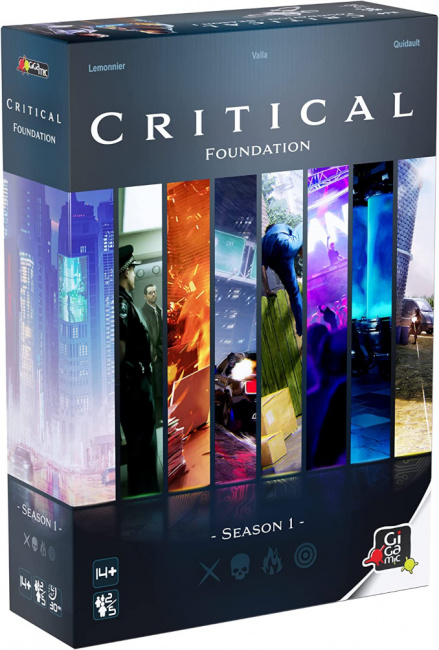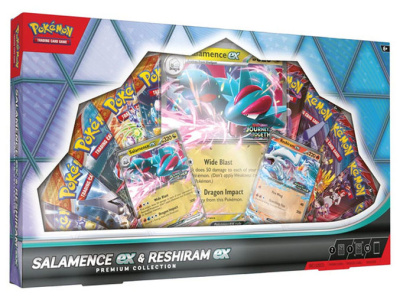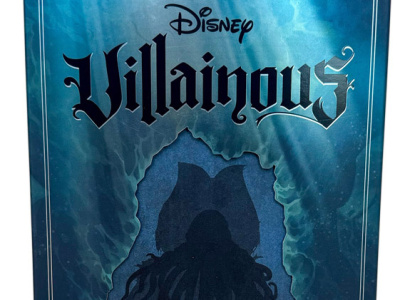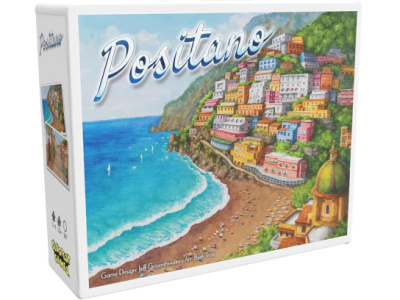Critical Foundation - Season 1
Publisher: Gigamic (Hachette Boardgames)
Release Date: November 16, 2022
MSRP: $34.99
Creator(s): Kristoff Valla & Yohan Lemonnier; Artwork by Pascal Quidaut
Format: Boxed, Rules and Components, including Cards and Special Dice
Number of Players: 2-5
Playing Time: 30 mins.
Product #: B0B5HMJGKX
Age Rating: 14+
ICv2 Rating: 3 Stars out of 5
This is an interesting game that may have trouble finding the right audience. It’s designed as a roleplaying game for beginners to the concept, and because of that, it includes definitions of very basic terms and phrases common to such games. What makes this game unusual is that it is designed to play in short segments, roughly comparable to a TV episode in length. Basically, a game session could last as little as 30 minutes, and rarely as much as an hour. The "episodes" are narrow in focus, with little chance for thinking outside the box, and some are so linear that the gamemaster is warned to use hints to get players back on the right track.
The components are well made, and the artwork is very good, especially on the scenario cards which give the players visual information about the locations. The game takes place in the mid-2030s, and is a mixture of action/adventure story with slightly advanced technology in a science fictional setting. This is actually one of the two weaknesses of the game, because the logic of the scenarios tends to wander in favor of coming across as something you would see on a screen. This leads to things like a team of four "specialists" of whom only one is likely to be a combat specialist being randomly thrown into firefights in the introductory scenarios. I mean, if you're playing a medical forensics specialist, is that really where your skills would be developed?
The other weakness of the game comes from the introductory format, because it's so introductory that logic sometimes gets overlooked. As a result, at the end of Episode 0, designed to teach the players, and perhaps the gamemaster, the mechanics of the game, a question arises… "What happened to the bomb, then?" There is a tendency for plot twists to change the course of the scenarios in weird ways.
Also, because of the introductory nature, there are very few choices for who and what the player characters can be… basically a soldier, a scientist, a medical specialist and a computer specialist, with two versions of each one, but only one of each can be used. There are very limited background options to modify these characters. The combat system is very simplistic, which means that the gamemaster is advised to fudge things to keep the characters alive and therefore able to continue. Part of the reason for this is that the combat system uses a very odd system of dice, custom-made for this game. Among other things, with these odd dice, every time a character attempts something that requires a die roll, there is a 1/12 chance that the results will be not just a failure, but a catastrophic one, after which the character receives a token that lets them add points to a future die roll [??]. That and other things suggest that this game will not really teach much about roleplaying games in general, just how to work with this one.
The rulebook is well written, and the examples given are mostly clear, but the terminology is designed to tie thinking to visual media. An overall adventure is an "episode," while part of that episode is a "scene." Also, there may be confusion about game mechanics, such as how long the effects of being injured to the point of "being exhausted," [an odd phrasing] will last. One page suggests that they last for the rest of the current episode, while another suggests that they can last for much longer.
On the positive side, the designers have promised more content and suggestions on their website, and if it sells, more scenarios as expansion packs. That is good, because what is included will really only take a few hours of game play, and the individual episodes are unlikely to be replayable by the same players.
The price is low enough that some potential gamemasters will buy it to give it a try with their game group. They should be made aware that, while other options are possible, the game is designed for one gamemaster and the same four other people to play the characters. Any fewer reduces the chance of having needed skills at various points in the episodes.
--Nick Smith: Library Technician, Community Services, for the Pasadena Public Library in California.
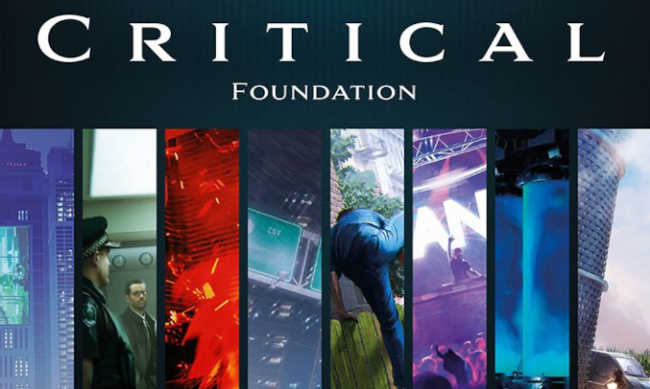
ICv2 Stars: 3 (out of 5)
Posted by Nick Smith on December 9, 2022 @ 5:51 pm CT
MORE GAMES
Featuring the Magical Houses of the Series
July 29, 2025
heo Group unveiled new Harry Potter 4-Pocket Zipfolios.
'Salamence ex & Reshiram ex'
July 29, 2025
The Pokemon Company International will release Salamence ex & Reshiram ex Premium Collection , for Pokemon TCG , into retail.
MORE REVIEWS
ICv2 Stars: 3.5 (out of 5)
July 24, 2025
Check out the review of Disney Villainous: Treacherous Tides, from Ravensburger.
ICv2 Stars: 4 (out of 5)
July 11, 2025
Here's a review of Positano, published by Slugfest Games.



